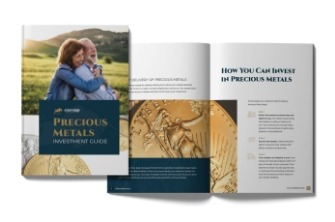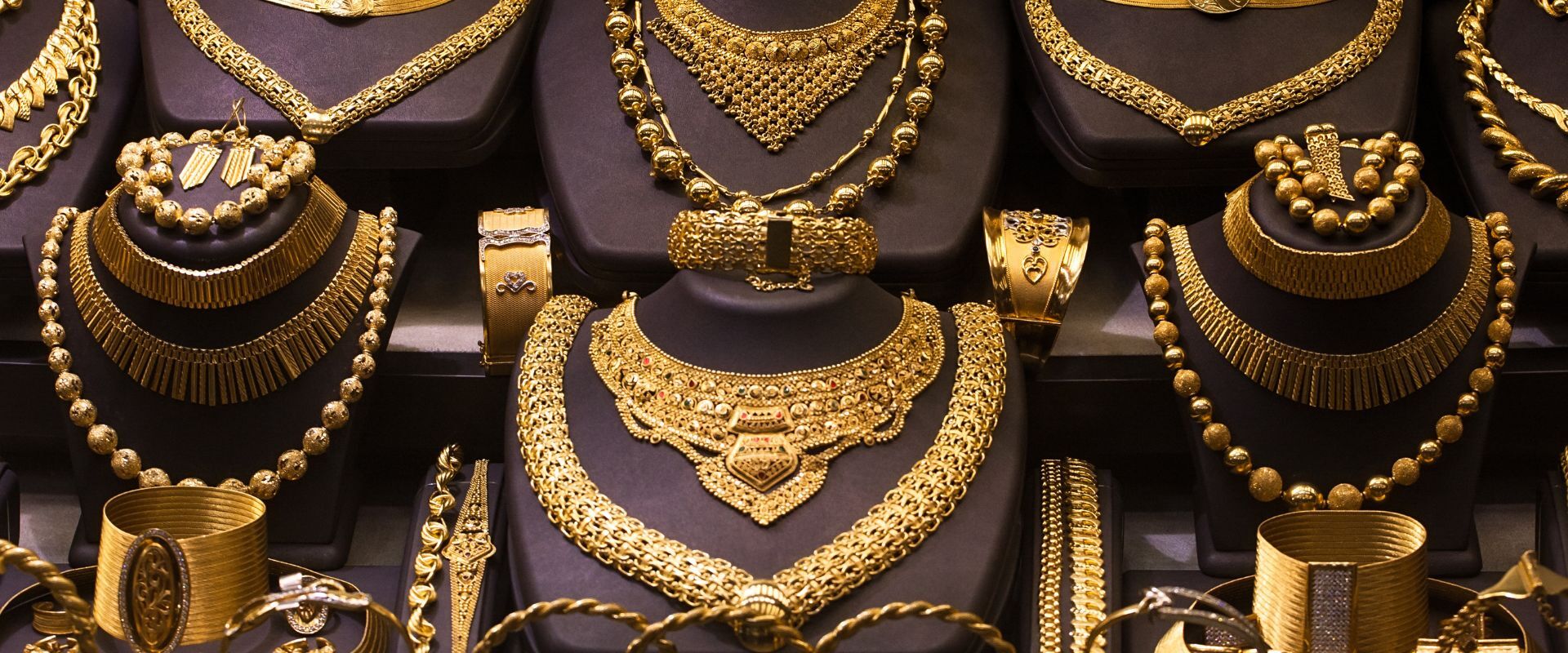Table of Contents
Many people choose gold-filled jewelry for its attractive look, relative durability, and affordable price. But what does gold-filled mean, and should you choose this type of jewelry for gift-giving or investment? And what’s the difference between solid gold, gold filling, and gold plating?
Keep reading for a clearer understanding of the technique and the value of gold-filled jewelry and accessories.
What Is Gold-Filled?
The term “gold-filled jewelry” refers to items with a core of base metal, usually brass, and an outer layer of solid gold.
Legally, to go on the market as gold-filled, an item must contain at least 5% gold. That’s a lot more gold than you’ll find in gold-plated or gold vermeil jewelry.
How Is Gold-Filled Jewelry Made?
The gold filling technique, also known as gold bonding or gold rolling, consists of using pressure and heat to bond a solid gold layer to a core of base metal. The bond is permanent, so the gold overlay won’t peel or detach from the base metal surface.
Composition
Brass is the most common base metal core in gold-filled jewelry, but you may sometimes encounter items with a sterling silver core.
The solid gold layer in gold-filled items is typically 12- or 14-karat gold, although some manufacturers offer 18k-gold-filled items. “Karat” refers to the percentage of gold in the solid gold layer, measured in units out of 24. For example, 14k gold is an alloy containing 14 parts gold and 10 parts other metals, or 58.5% gold and 41.5% other metals.
Gold-Filled vs. Other Jewelry Types
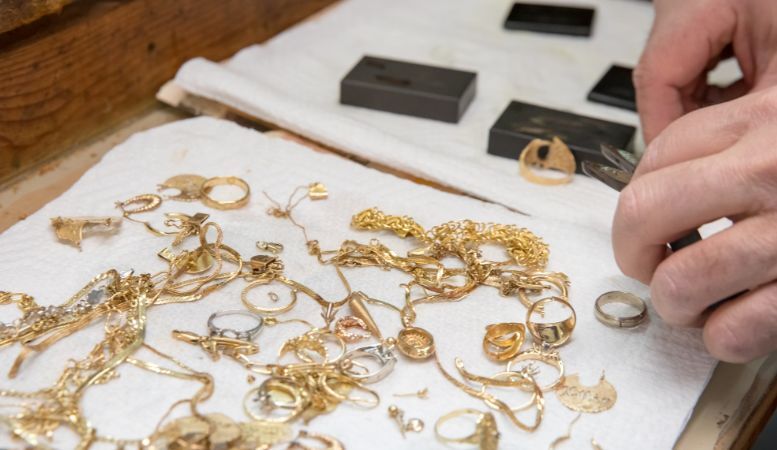
For non-professionals, it can be easy to confuse the terms “gold-filled,” “gold-plated,” and “gold vermeil.” You may also ask, “What does gold-filled mean in terms of value and durability versus solid gold?”
Let’s give a brief overview of these different jewelry types.
Gold-Plated
Gold-plated jewelry is the cheapest type of gold-coated jewelry on the market. It consists of a base metal core with a very thin gold layer over it, often only 0.5 microns. Gold-plated jewelry soon wears down to its bare metal core, at which point it becomes unsightly and often provokes allergic reactions in sensitive individuals.
Gold Vermeil
“Gold vermeil” is a legally regulated term for jewelry consisting of a sterling silver core coated with a gold layer of at least 2.5 microns. Although gold vermeil jewelry is more durable than gold-plated items, it will still wear down to its core with frequent use. The main advantage of gold vermeil jewelry is that it’s more suitable for sensitive skin thanks to its thicker gold coating and sterling silver base.
Solid Gold
Solid gold is the most durable and tarnish-resistant of all jewelry options. While the price point of solid gold jewelry is much higher compared to gold vermeil or gold-filled items, a solid gold piece can last a lifetime with minimal maintenance and retain its value. Classic gold rings, bracelets, and necklaces can become heirloom items that pass from generation to generation.
Solid gold items won’t lose their luster if you shower, swim, or work out while wearing them, although they may scratch or dent from rough use.
Because pure gold is soft and malleable, most commercial solid gold items are made of 12-karat, 14-karat, or 18-karat gold alloys with other metals, like silver or copper. If you’re looking to purchase gold for investment rather than a wearable item, the best type of gold to buy is fine gold of at least 99.9% purity.
Advantages of Gold-Filled Jewelry
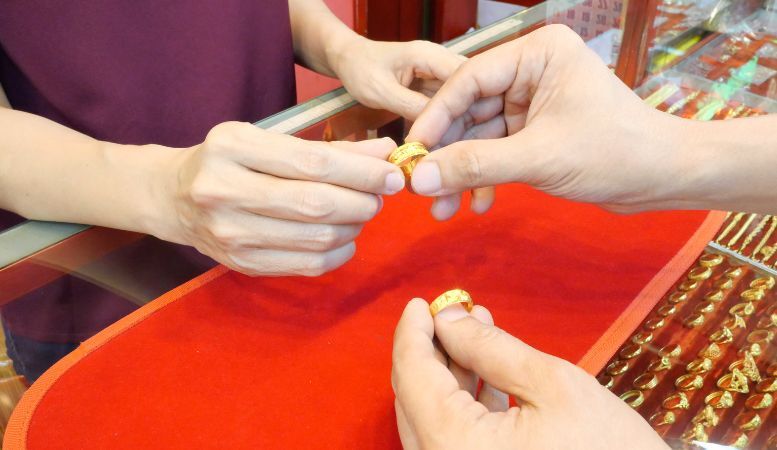
As long as you understand what you’re buying and have realistic expectations, gold-filled jewelry can be an attractive choice.
Affordable
You can purchase gold-filled jewelry for a fraction of what a similar solid gold item would cost. This is a major advantage if you’re looking for an affordable gift, a statement piece for a one-time occasion, or vacation jewelry you can wear without fear of theft. If you accidentally lose or break a gold-filled jewelry piece, you can easily replace it.
Durable and Long-Lasting
Quality gold-filled jewelry is highly durable and can last for decades with careful use. However, the gold layer will wear down eventually. To preserve gold-filled jewelry in good condition for as long as possible, keep the item away from liquids, chemicals, lotions, and friction against other surfaces. If necessary, you can clean a gold-filled item with a mild soap and water solution and dry it with a soft cloth.
Hypoallergenic
Gold-filled jewelry is hypoallergenic since the only metal touching the skin is the layer of gold. As long as the gold coating is intact, your skin shouldn’t react any differently to gold-filled vs. solid gold items.
Versatile
You can find all types of gold-filled jewelry, including rings, necklaces, earrings, bracelets, and more. Thanks to the low price point, you can purchase a variety of items for every occasion.
Maintains Value
Gold-filled jewelry items cost more than their lower-quality gold-plated counterparts, but they also stay shiny and attractive much longer. You can enjoy a well-made gold-filled jewelry piece for years with minimal upkeep.
Disadvantages of Gold-Filled Jewelry
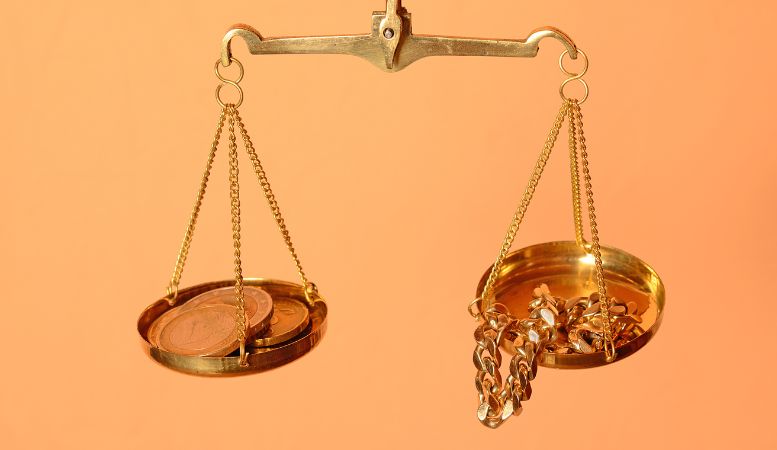
With all the perks of gold-filled jewelry, it will still never compare in value and durability to solid gold. Solid gold is an almost universal choice for everyday wear items like engagement and wedding rings.
Limited Resale Value
It may be hard to find a buyer for used gold-filled jewelry. Since gold-filled jewelry is inexpensive to begin with, people are more likely to choose new items.
Thin Gold Layer
Although gold-filled jewelry contains considerably more solid gold than gold-plated items (5% vs. approximately 0.05% of the item’s weight), the gold coating is still thin and will wear off eventually. Once that happens, the item loses all value and becomes unwearable.
Lower Intrinsic Value
Since gold only makes up a fraction of a gold-filled jewelry item, this type of jewelry has low intrinsic value. In contrast, solid gold jewelry, even scrap gold, keeps its value forever. It’s possible to melt down old jewelry to create a new piece, restore a scratched or bent item, or sell solid gold items for cash.
Solder Marks
Solder marks are an occasional issue with gold-filled items. Overheating may cause the base substrate to permeate the gold coating, leaving a dark, tarnish-prone solder joint. Jewelry creators may use gold plating to protect the item and hide any solder marks, but this thinner plating can easily wear off.
To ensure you’re getting a quality jewelry piece, always choose a reputable company that offers a warranty on its jewelry items. Anyone selling gold jewelry without such assurance is likely trying to scam you. Always trust your instincts if something doesn’t feel right.
Find High-Quality Gold Products for Investment at Oxford Gold Group
In the jewelry market, the answer to “What does gold-filled mean?” is generally “A piece of jewelry that looks good but has limited intrinsic and resale value.” Knowing the distinction can help you when purchasing gold for personal enjoyment or investment.
If you’re looking for investment-grade gold from a reputable source, look into pure gold bars and legal tender coins at Oxford Gold Group. Our high-purity gold products are easy to resell and retain their value throughout market fluctuations.
